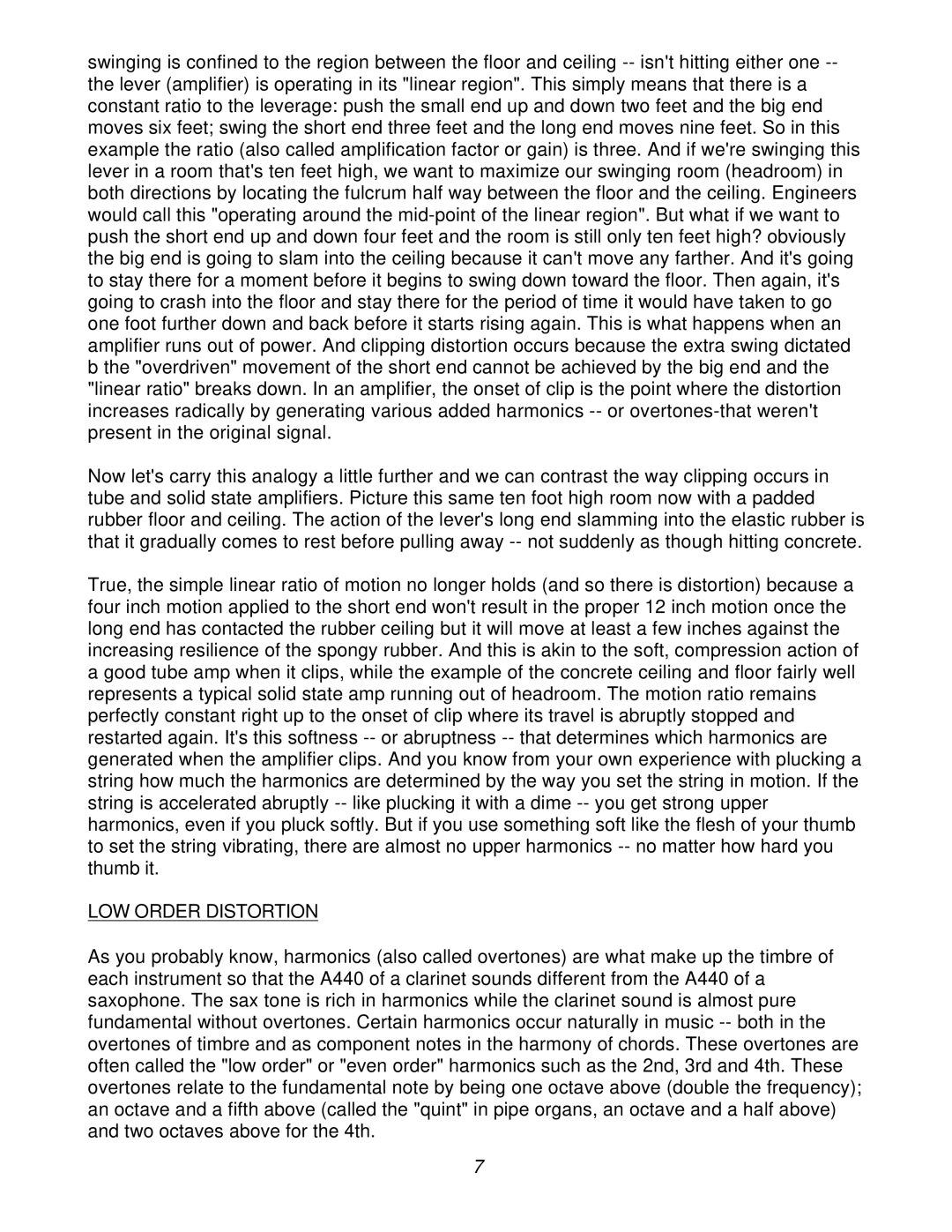400 specifications
The Mesa/Boogie 400 is an iconic bass amplifier that has set the standard for power, versatility, and tonal quality in the world of professional music. Renowned for its robust construction and cutting-edge features, this amplifier is designed to meet the demands of both studio and live performances, making it a favorite among musicians.One of the main features of the Mesa/Boogie 400 is its high wattage output, providing a staggering 400 watts of power. This ensures that even in the most demanding performance venues, the amplifier delivers a punchy and clear sound that can easily fill the space. The power handling capability enables it to drive various speaker configurations, making it adaptable to different setups.
At the heart of the Mesa/Boogie 400 is a sophisticated preamp design that utilizes a hybrid of tube and solid-state technologies. This combination allows for a warm, rich tonal character provided by the tubes, while maintaining the reliability and clarity that solid-state components offer. The amp typically features a dual-channel preamp, allowing players to switch between different tonal profiles or blend them for a more complex sound.
Another significant characteristic of the Mesa/Boogie 400 is its extensive EQ section. With multiple bands of EQ, musicians can sculpt their sound precisely to their liking, enhancing the low-end thump, mid-range clarity, and high-end presence. This level of control enables bassists to tailor their tone to fit various genres, from rock to jazz and beyond.
The amplifier is known for its durability, constructed with high-quality materials that withstand the rigors of touring. Its rugged chassis and reliable components ensure that it delivers consistent performance through years of use. Additionally, many models of the Mesa/Boogie 400 incorporate advanced cooling systems to prevent overheating and maintain optimal operation during prolonged gigging sessions.
Portability is another feature that cannot be overlooked. The Mesa/Boogie 400 often comes in a lightweight package relative to its power output, allowing musicians to transport it easily to rehearsals and performances.
In summary, the Mesa/Boogie 400 represents a pinnacle of bass amplification, known for its power, tonal flexibility, and durability. With its hybrid technology, comprehensive EQ options, and road-ready design, it delivers exceptional performance for serious bassists looking to elevate their sound.
